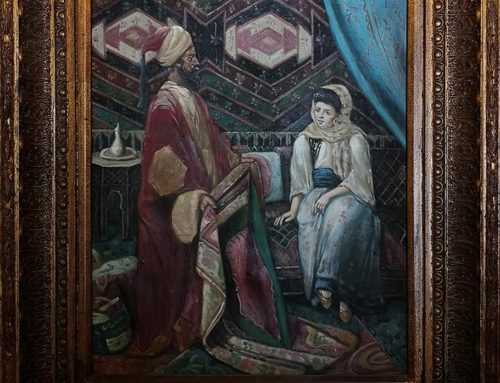A dream is the experience of envisioned images, voices, or other sensations during sleep. Dreams often portray events which are impossible or unlikely in physical reality, and are usually outside the control of the dreamer, (although some people have reported lucid dreaming, breaking the suspension of disbelief and realizing they are dreaming—being sometimes even capable of changing the oneiric reality around them and controlling various aspects of the dream). Many people report experiencing strong emotions while dreaming, and frightening or upsetting dreams are referred to as nightmares.
Dreams have a long history both as a subject of conjecture and as a source of inspiration (artistic or otherwise). Throughout history, people have sought meaning in dreams. They have been described physiologically as a response to neural processes during sleep, psychologically as reflections of the unconscious, and spiritually as messages from God or predictions of the future.
In antiquity, dreams were thought to be part of the supernatural world and were seen as messages from the gods. It was common for leaders to take dream-oracles to battles to receive their advice and guidance.
Likewise, the holy books Torah (known in Christianity as the first 5 books of the Old Testament) and Koran both tell the same story of Joseph, who was given the power to interpret dreams and act accordingly. Some sources also state that like Joseph, many other prophets were described to have a stronger affinity to interpret the images in their dreams to lead the people around them.
This continued into the Early Middle Ages. A story from Nevers, which is reproduced in the Golden Legend, states that one night Emperor Charlemagne dreamed that he was saved of dying from a wild boar during a hunt. He was saved by the appearance of a child, who had promised to save the emperor from death if he would give him clothes to cover his nakedness. The bishop of Nevers interpreted this dream to mean that he wanted the emperor to repair the roof of the cathedral dedicated to the boy-saint Saint Cyricus.
In the Later Middle Ages, dreams were seen as temptations from the Devil and thus were seen as dangerous.
However, in India, scholars such as Charaka (300 BC) gave alternative explanations for the reasons behind the dream. In Charaka Samhita, the explanation of dreams is as follows: “The cause of dreams are seven. They are what you have seen, heard, experienced, wish to experience, forced to experience, imagined and by the inherent nature of the body”.
In the later 19th century according to the theories of Sigmund Freud, dreams were a reflection of human desires and were prompted by external stimuli.
Dream Journey Many tribal peoples believe that the human soul temporarily leaves the body during the dream-state, wandering in other worlds and meeting other souls,
including those of the dead. These nocturnal journeys have provided a great deal of material for myth-making. In North America and Southeast Asia such voyages are thought to expose errant soul to the danger of abduction by a sorcerer or malevolent spirit; when this happens, local shamans are customarily employed to search for and retrieve the lost soul.”
Dream interpretation is the process of assigning meaning to dreams. In many of the ancient societies, including Egypt and Greece, dreaming was considered a supernatural communication or a means of divine intervention, whose message could be unraveled by those with certain powers.
The ancient Greek’s constructed temples they called Asclepieions, where sick people were sent to be cured. It was believed that cures would be effected through divine grace through dreams experienced within their confines. Dreams were also considered prophetic or omens of particular significance. In ancient Egypt, priests also acted as dream interpreters. Hieroglyphics depicting dreams and their interpretations are evident. Dreams have been held in considerable importance through history by most cultures.
Dream interpretation was taken up as part of psychoanalysis at the end of the 19th Century; the manifest content of a dream (what is perceived in the dream) is analyzed to reveal the latent content of a dream (the underlying thoughts of the dream — why it was dreamt). One of the seminal works on the subject is The Interpretation of Dreams by Sigmund Freud. – Order the book.






